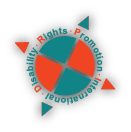Characteristics of Disability NGOs
As mentioned above, in the past, most of the work for the welfare of persons with disabilities has been taken up by charitable institutions and organizations. Over the last few years, however, there has been considerable contribution of Self-Help Groups and organizations of persons with disabilities themselves. The voluntary and charitable institutions are led by able bodied, well-meaning individuals, who often work on the assumption that persons with disabilities are incapable of leading independent lives. Their approach is akin to the biocentric model and thus their work is basically focused on service delivery. The organizations and institutions led and membered by people with disabilities, though a recent phenomenon and as such much less in number than the traditional charitable institutions, have been and do focus mainly on protection and attainment of their rights as citizens of this country and advocate tolerance to diversity and difference.
Both the State and people in society tend to accord greater importance to welfare oriented service delivery and as such that has what been implemented so far, as can be seen by the concern of the Steering Committee of the Planning Commission for the Tenth Five Year Plan in the reduction of the involvement of Charitable Organisations in the welfare work for persons with disabilities. This attitude is what has been hampering the work of the self-help organisations of people with disabilities and their parents for advocacy campaigns as it conflicts directly with the concept of development and human rights. Obstacles in social attitudes and cultural myths, apathy, and sympathy that remain blind to the unique abilities of people with disabilities must still be overcome through a paradigm shift from welfare to human rights.
Source: “Human Rights, Disability and Law”, National Human Rights Commission Report on the Status of Disability in India, 2005
